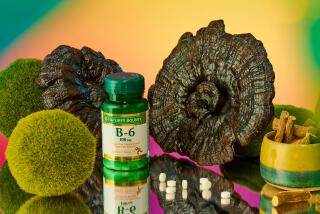Starbucks is getting the bugs out
Next time you pass a prickly pear patch, take a closer look, especially around the points where the spines stick out. You might see what looks like a spot or blotch of white or grayish cotton. At one point, the stuff under that little puff rivaled silver as a precious export.
The white stuff is protective cover for the cochineal bug, which infests prickly pear, sometimes to the point where the pads look almost as white as they do green. Spread on a piece of paper, it gives a smear of deep red color, sometimes a bright fuchsia, other times almost a maroon.
Think of it as the first bug juice. Cochineal, or an extract called carmine, is frequently used as a natural red coloring for foods and cosmetics. Among those foods has been Starbucks’ strawberry Frappuccino, news that recently struck the vegan crowd because even if they ordered theirs with soy milk, there was no way this could be considered kosher. (Actually, it’s not kosher either.) For that matter, it wouldn’t even be vegetarian.
An online petition took care of that, and Starbucks will now switch to a vegetable-based coloring. But Starbucks was hardly the last company to sell cochineal, nor the first. Not by a long shot.
When Hernan Cortes came across the brilliant, relatively colorfast reds of cochineal used to color clothing and skin by native peoples in Mexico, he saw a huge commercial opportunity. At that point, Europe had no colors this vibrant or this lasting. Exclusive trade was set up, and care taken to make sure that prickly pear was not taken off the continent, ensuring Spain’s place in the textile competition with England. Of course, eventually it was indeed smuggled out and became the coloring of the British military’s famous red coats. It also was used to dye the royal purple robes of Europe. In the late 1800s, though, aniline dyes made from coal tar replaced cochineal as red dyestuff for clothes.
By then, the cactus had been planted widely in Italy, where it flourished in the climate very similar to ours, and eventually was brought to the Middle East. In Israel, the prickly pear fruit is known as the sabra, which is also the word for a native-born Israeli; relatively few Israelis realize that this plant is no local native.
Cochineal, like pink slime, is one of those previously little known and perhaps off-putting facts of food production. But it’s by no means a dangerous product, as far as anyone knows. Vegetarians would understandably be unwilling to use it, and now that more people know about it and are grimacing over the idea of eating food with bugs in it, there might be a bigger push against this ancient red dye.
Now if only the public would get equally worked up about the antibiotics used so freely in the livestock industry to fatten cattle and prevent illness in crowded pens. This routine use is contributing to the development of bacteria that are resistant to antibiotics. Little red-filled bugs on local cactus might strike many as gross, but they’re not nearly as troubling as “superbugs”.
ALSO:
Punishing North Korea’s people
A college bargain for Californians
More to Read
A cure for the common opinion
Get thought-provoking perspectives with our weekly newsletter.
You may occasionally receive promotional content from the Los Angeles Times.











